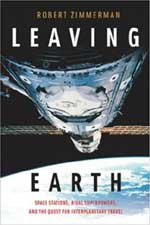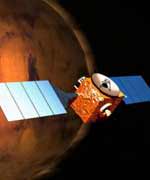Detailed analyses of mankind’s deepest optical view of the universe, the Hubble Ultra Deep Field (HUDF), by several expert teams have at last identified what may turn out to be some of the earliest star-forming galaxies. Astronomers are now debating whether the hottest stars in these early galaxies may have provided enough radiation to “lift a curtain” of cold, primordial hydrogen that cooled after the big bang. This is a problem that has perplexed astronomers over the past decade, and NASA’s Hubble Space Telescope has at last glimpsed what could be the “end of the opening act” of galaxy formation. These faint sources illustrate how astronomers can begin to explore when the first galaxies formed and what their properties might be.
But even though Hubble has looked 95 percent of the way back to the beginning of time, astronomers agree that’s not far enough. “For the first time, we at last have real data to address this final frontier ? but we need more observations. We must push even deeper into the universe, unveiling what happened during the initial 5 percent of the remaining distance back to the big bang,” said Richard Ellis of the California Institute of Technology in Pasadena, Calif.
In the past couple decades astronomers have amassed evidence that we live in a reionized or “refried universe.” This so-called reionization epoch was a critical watershed for the evolving universe. During that early time cold hydrogen atoms drifting in space were pumped up with so much energy from the ultraviolet starlight that they were stripped of their electrons. The universe once again became transparent to light, like the Sun burning off a morning fog. This early period is called “reionization” because the primeval universe, which was hotter than our Sun, was initially ionized as a soup of hydrogen nuclei and free-moving electrons. As the universe cooled through the expansion of space, these electrons were captured by hydrogen nuclei to make neutral hydrogen. But the electrons were lost again when the first fiercely bright stars fired up.
The epoch of reionization is thought to have ended 0.5 to one billion years after the big bang. Constraints come from observations of quasars located with the Sloan Digital Sky Survey, and recent measures of polarization in the radiation emerging from the earliest phases of cosmic history recorded by the Wilkinson Microwave Anisotropy Probe (WMAP).
The major difficulty has been that galaxies at such a remote distance are very faint and are very hard to find. Only the most luminous galaxies can be relatively easily seen. Prior to the HUDF, astronomers did not have the sensitivity to accurately constrain the numbers of very distant sources at that epoch, and so there’s been a long-standing debate whether normal galaxies were really capable of doing the reionizing job.
The sensitivity of Hubble’s Advanced Camera for Surveys (ACS), combined with the penetrating power of the Near Infrared Camera and Multi-Object Spectrometer (NICMOS), finally revealed these long sough faint galaxies. The HUDF shows that close to a billion years after the big bang the early universe was filled with dwarf galaxies, but no fully formed galaxies like our Milky Way. After careful analysis, they have been sorted out as between 54 and 108 dim, red smudges sprinkled across the HUDF image. From a hierarchical point of view, this means the universe started out as a bunch of “mom & pop” stores, which merged into businesses, and then into giant corporations ? the majestic galaxies we see today.
HUDF research are being led by: Rodger Thompson (University of Arizona, Tucson, Ariz.) and collaborator Rychard Bouwens (University of California/Lick Observatory, Santa Cruz, Calif.) [see science papers 1, 2 and 3]; Haojing Yan (Spitzer Science Center, California Institute of Technology, Pasadena, Calif.) and Rogier Windhorst (Arizona State University, Tempe, Ariz.) [see science paper]; Massimo Stiavelli (Space Telescope Science Institute, Baltimore, MD.) [see science paper]; Andrew Bunker (University of Exeter and the University of Cambridge, UK) [see science papers 1 and 2]; and Sangeeta Malhotra and James Rhoads (Space Telescope Science Institute) [see science paper]. The teams used different techniques:
The Bunker team identified a list of 50 probable distant galaxies in the Ultra Deep Field and distributed details of their work within a day of the images becoming publicly available. They isolated their distant sample using techniques developed with earlier, less sensitive, Hubble images tested through spectroscopic observations undertaken with the 10-meter W.M. Keck observatory in Hawaii. Bunker’s team claims that the combined ultraviolet light from the galaxies located in the Ultra Deep Field is insufficient to reionize the universe. Perhaps the physics of star formation was different at these early times, or a further, yet more distant population is responsible.
The Stiavelli team shows that the same objects would be sufficient to reionize the universe, if they possessed much fewer heavier elements ? anything heavier than helium ? than those of present-day galaxies, and if the early galaxies contained more massive stars. Both these assumptions are reasonable at early epochs, since astronomers know that stars make the metals that exist in the universe. Early on, before most of the stars we see today had been formed, the amount of elements must have been much lower.
The Yan and Windhorst team started from the objects that are seen, and then carefully estimated the fraction of fainter galaxies that are not seen, even in the Hubble Ultra Deep Field. They found that the number of dwarf galaxies rapidly increases at fainter levels in the HUDF. This is like a cosmic “stock- market chart” but with very few large corporations and numerous “mom-and-pop corner stores.” Yan and Windhorst conclude that this steep increase of the faint dwarf galaxy population collectively generates enough ultraviolet light to finish reionizing the universe by redshift 6, even if the amount of heavier elements was similar to that of present-day galaxies.
The HUDF NICMOS Treasury team (Thompson/Illingworth) has taken the UDF data and other ACS survey data to get the best possible estimate of the relative numbers of bright and faint galaxies around redshift 6, only 900 million years after the big bang. The papers, led by Rychard Bouwens, show that faint galaxies dominate at this epoch, compared to more recent times, and are likely to have played a significant role in the late stages of reionization. The team has also used the HUDF NICMOS data to detect a small sample of galaxies at higher redshifts (at z=7-8), 200 million years closer in time to the big bang. The amount of reionizing light at redshifts 7-8 appears to be lower than what is seen only 200 million years later at redshift 6.
The Malhotra and Rhoads team have found a “sheet” of galaxies in the HUDF. They find that the galaxy density near redshift z=5.9 (look-back time of 12.5 billion years) is four times the galaxy density in the rest of the surveyed HUDF “core sample.” This supports theories of galaxy formation which predict that dense regions should be the first sites of galaxy formation. This evidence for an over density was bolstered by a complementary study, undertaken by Malhotra, Rhoads, and JunXian Wang, which uses the Cerro Tololo Inter-American Observatory to obtain a map of galaxies over a much wider area than the HUDF. Even with its lower sensitivity and more limited coverage in distance, this map shows that “extra” galaxies are spread like a sheet, with the HUDF located near one edge of the structure. “The presence of such structures doubtlessly affected the reionization of the universe, because the ultraviolet light that separated intergalactic hydrogen atoms into protons and electrons would have been more intense where galaxies are more common. It is then likely that reionization proceeded at different speeds in different regions of the early universe,” says Rhoads. This Hubble team used spectra to measure the distances of these galaxies very precisely.
The WFC3 built for Hubble is expected to see ten times as many distant infrared galaxies as the NICMOS. When launched, the JWST will have the light-gathering power to peruse an even earlier universe and actually see the very first stars and star clusters, which remain beyond even Hubble’s reach. These still hypothesized ultra-bright stars formed only 200 million years after the big bang (at redshift z=20, and as deduced from the WMAP image of the cosmic microwave background). They are currently believed to have heated the universe so much back then, that smaller, normal stars had to wait for the hydrogen gas to re-cool and condense before they could form.
Original Source: Hubble News Release



